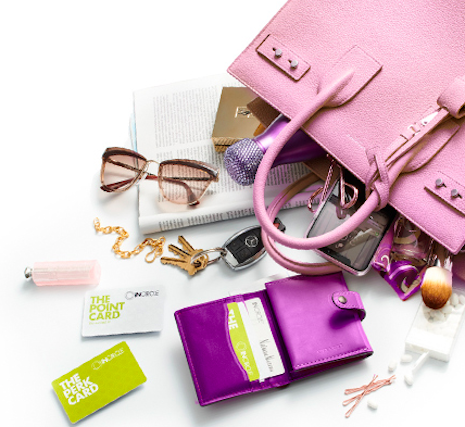As luxury marketers aim to build loyalty programs that appeal to the growing consumer base of millennial and Gen Z shoppers, they may be missing out on the affluent older generations by not taking their needs into account.
The Silent Generation, those over the age of 73, are the least likely to be active in a loyalty program, while 82 percent of Gen Z shoppers are enrolled in rewards clubs. While rewards programs are crucial in driving repeat business and ongoing relationships, luxury retailers need to consider how they are designing these membership-based services to appeal to a broader consumer base.
"By adopting a loyalty program, brands are able to create one-to-one relationships with their customers," said Emily Rudin, chief customer officer at CrowdTwist, New York.
"Multichannel loyalty programs allow brands to reward customers for not only spending but also for engaging with a brand," she said. "Brands are able to leverage the insight gleaned from their loyalty programs to better market to their customers.
"Our research shows that a significant percentage of consumers will abandon loyalty programs when rewards aren’t compelling or relevant. So, developing the right rewards strategy for your brand is key when launching a loyalty initiative. Brands need to establish the right rewards mix for their core customers to help create meaningful moments and build an emotional connection."
CrowdTwist surveyed 1,054 U.S. consumers in June 2018, with respondents almost evenly split between genders.
Perk preferences
For 63 percent of consumers, a brand’s loyalty program could be a reason to choose them over a competitor. This is even more true for consumers in the Gen X, Gen Z and millennial age groups.
"The majority of millennials are persuaded to shop with a brand due to the presence of a loyalty program, therefore millennial-focused brands should invest in loyalty to get ahead of the competition," Ms. Rudin said. "Millennials want discounts and savings in return for loyalty, so luxury brands targeting this consumer group should make their members feel valued by providing member-only pricing, exclusive sales events and promotions and discounts or money-off rewards."
Across generations, the primary driver for buying into a loyalty program is the opportunity to save money. This may be through member-only prices, free shipping or free returns.
VIP treatment is not as much of an attraction for customers, but the silent generation finds it the most appealing out of any group.
In addition to being the most apt to enroll in loyalty programs, Gen Z is more likely to embrace paying for perks such as free shipping.
While Gen Z is more actively involved in loyalty programs, the more mature Gen X is the group that redeems points most frequently.

Promotional image for Neiman Marcus' InCircle program. Image credit: Neiman Marcus
Beyond earning rewards for purchases, younger consumers want to be able to gain credits through visits to stores or a brand’s Web site. The younger a consumer is, the greater the appeal of accruing points this way, with 87 percent of Gen Zers seeking rewards for store trips.
While consumers’ reasons for joining a loyalty program are fairly similar, different generations favor diverse perks. Millennials are more likely to want access to experiences such as concerts or sporting events, while Gen Z consumers show the most preference for earning charitable donations.
Shoppers' reasons for leaving a loyalty program also vary. The eldest boomers and silent generation consumers exit if they find they are not receiving relevant rewards, while Gen X shoppers will abandon a program if they feel they are not being valued by the retailer.
The typically less affluent millennials and Gen Zers get frustrated if it takes too long to earn points.
Luxury brands’ focus on millennials and Gen Z clientele makes sense for more reasons than their burgeoning incomes. These are the age groups that enjoy shopping the most.

Affluent consumers are more apt to take part in loyalty programs. Image credit: Nordstrom
All consumer groups favor online shopping, partly because they get to skip long checkout lines, the number one frustration about in-store shopping. However, the bricks-and-mortar environment is still important.
Taking a cross-channel approach, Gen Z and baby boomer shoppers show the most preference for seeing items in-store and having them shipped to their house.
Loyalty does not solely revolve around having a strong rewards system. Consumers also self-report that they choose to frequent their favorite retailers because of qualities such as product selection and positive shopping experiences.
"Baby boomers are the most affluent consumer group," Ms. Rudin said. "They have money to spend, but are underwhelmed by the programs in market today.
"Luxury brands targeting this group have a real opportunity to stand out from the crowd," she said. "Like most consumers, baby boomers primarily prefer to shop online, however they enjoy in-store shopping more than any other generation, so brands need to invest in the in-store experience."
Loyalty in luxury
Consumers with higher incomes are more apt to be part of a loyalty program than their peers, pointing to the potential benefit of these membership clubs for luxury brands.
According to a prior report from CrowdTwist, affluent consumers are some of the most active loyalty users, with these shoppers most frequently cashing in rewards. As consumers become more distrustful of data collection, luxury brands can leverage loyalty programs as an incentive for opting in (see story).
CrowdTwist found that consumers are less willing to offer up their information to retailers in exchange for loyalty than they were last year. At the same time, retailers are failing to deliver successfully on personalization, as less than half of shoppers report buying products that were suggested to them.
As millennials and Gen Z consumers become a greater part of the luxury business, having loyalty programs that can deliver rewards more frequently can be a plus for retailers.
For instance, department store chain Nordstrom is revamping its loyalty program to include additional personalization and more convenient ways to shop.
Dubbed The Nordy Club, the new rewards system launched in October and will allow participants to earn points faster than before. The benefits are not limited to cardholders, making it more appealing to younger shoppers who tend to eschew credit cards (see story).
"Many retailers are making efforts to personalize but often fall short on delivery due to the fact that they are overwhelmed by the amount of data they collect on customers, and face challenges around how to apply that insight to deliver meaningful customer experiences," Ms. Rudin said.
"Brands can improve personalized experiences by investing in a multichannel loyalty solution that captures customer behavior and transactional data and segment customers based on where they fall in the product life cycle and how they engage with the brand," she said. "Brands can group customers based on all known data to deliver personalized activities, rewards and brand experiences."
{"ct":"tUi9QQbaf4XYW9h+r0f5pt2cIhBN5VYl8KgnEi+C\/i9a71JJYjkjaEp5c1twUiRc4r+TzN9qsrBo565UutS+HAkhbCxqWydLHHY64eyqQlkt599sZXdkFTNu83CRxxvfvsMTx2zVwGoDVwAE+8NcxolRvdVgRQGkvBLB\/GBrfPUsbBh2IMD6r49qIyXbyY2qSCyqkTK0iqOAGrgjeC\/8l7Ve2LRiopW7SjKttjMLY\/7syAwPEzSb3uBcsvYEqcZtGuAeypYF95DVkPe4ZrXAwtaTn\/4ZzFa5vdvH1+yH1XLRm7EiAGnMipOyI0wbhOMeVzhForUWt+PYco8udoQZ1UUlH30TNE4+m75TBJn+Ze6kpLrKbWpPXez783i0Cw1BLaFhiudKRsbyl\/X89ZEHgYFcoAw9FEI8lWBOijTmBCxul1xhvsNbGh3OsIDLKyMuMIVw0Y82GYv9W+\/TLXZs65hlajt8QLozOd8FtKeOMIbdNSc2C+5Edf5EGe+JfjjblpClnoDDqXU7rhPA3xdp+cOxTYAa0QO4d7RgPLCsDMSsnEkMCj9acy9fgfbrkJDzXjbiF7jq4sppbfQB6s6bVKnNFdmYbi70YTOKDkCWwV9z0g4N7IMCVjLbaeg90+zaZdu\/m0hzUsSVSB97KAoTTnDQuuj1Qse7SHBVhTa3\/ApiioRF0LfsxStV3REFsUUXMJYTHR+BEUG4l\/vU2rGe8xqfF0sH0bzj4iMA8gLeecW2u92v1eBytXZy\/nSwcPf5KO1MunSLFJapG\/le+rc0jPqTM7fmk7Cz6OelTX14i\/a8VpO8dW8CXNinsR5M1XUrLhOZjqiIxmSuI4U6C3iHN7DJBL\/USQL1yXPSW67e24r1O7YLjWHYncfiy8lZlYaRLSXjAo7Z0LYPHmSHyh+HFaMDdzbN4nz6QFG8H8FePeToFC2rqq9P1dPkd9vf\/AokhPY+Tpq7cMeXLpOM2kPDq11JOj3lc5Z0EudrkY0GKbsbSN8fgKuppk0V\/eC5HhLzbe9i3nGTl+IVF7uGKeXY+pM3Du0go7sSXRUfnBPTtfMpVYJhpUfKVCiycNLbVUSXwNTwhUMmEMtWtikIRKVPRh6VATjN3oO91KDhEE3xJlLnAkr4yzH1vtb7\/Ak0F8B9Z51fTqyMFi\/A5buxOeKcg0RtmE0VP8sbbFDIqfZG9u4u\/83nU3nMGIhN7yJHXq33C+2fNP9bl2Q1RDqFZNI+Aeci4QWycoJXbOf7VpQnH0zm7J80VKY61nxuYy7rH4D2rgRfgAuwCpXqubrMtKlgPztwnhF6tFVHYgoYSumlYlV+rD3YO4rzNyGZRNvlnEAbHZzGHQXBYr\/U7tkGZ9AuNmuEIHOSN4gwm4rCst1uo\/Bk6uNzkbc2zMVEsKl\/sfFKYrNuV0DA2nM6UqIo1P4lXUmr+ICl0CrtlW2jJP1dExNtbjjV2DnGXa2H5juYH8PSyOiHXRTXMHnJMOo4N6zWs6MtJNaQmy8NIBHAY2Yhf2V2xetdkc1FRvVQtzGUUMO0Dow2G3JvCwTsmKjuakdo1WKoaLsv3F0eXJNgKc0X37OMiNAmngjmuTGzUM1rgK5s8QG1MXNARWjZjeaFaJ4tViN\/U3CXF38tnNnLp1dBLcKFXrCXpebzAXR4hvRYKEpqDFcrySpSP\/mxAS3w8cgc46blha2XYu7Ebe+u0+PJCVmHlpewHvC8DQH50s77BD96nQzU71CqJuDRK1+Ull5l0YE45OlcYaCmb+X7Ai83JrsDY9+CGUkyrtySD2WuVS3Rby6D2NjFXlZOLsGKjroexUXe+nZ0fWwDr8xRrkszzfmuKABjwCCAAilETk3FXT5qphLCUWF2TZIlVdlZcTX1NTA1wyng6ccyKK3I4LmwUg11ekeqiGlUzLMn6d7ioMt1UY2uPlYhMUdiZJ1WShwE43Vc6iwkgeBOr0dIlIOLBfDJ7y4lQkDf6iIDLIDFR8jI+f0bJJ8CT6EN1dps5L4QnxsQVi80TgEN2rPhFXM+e88aVisnduGrTAEx\/OZFPsedznFsheBRj1Thqn863XLNB4HSv\/mhkJA5Io28TFGey\/GDbe5uLdtY0QLRK0hebPoQB3nFS3rODjjnCDokJkcRSqTQ9kSIrDnS20fZr7yMoPJsQ82u4wh5dyHBAMSq2ML0cY03Qss6LNzFolrDvF4R7o\/onG9AU4FyGQY5rsyHyT8pO6OwZYghDoTQvlG4HIV7b9kpFNBEBOxmvPGuSdmJid5QUliF7adtdhl6WibPpytlVEPHhc5xpbOdImKSSqcC+z3z9iY8OZSS+VB483Fr6I4HfVPHEVb3TetMhqZiq5T\/QWBVq+Z8+k628N9ptjHzLjuZcxZwq9MjjxxbX3d4vCWUsdvFSDeZiTpGi9jJxDhVRzv8kNiRz9Tetx5AIzBQhl1SgRYlVn0z+KKUj39zegdwhkLPKIF5p0qXMpNCAJ\/pnpuZwimNImHLgIKpKwEKIn2nSMar6HlkZ2yByPJ81HKImaL6sqCXiByKNSQ1Q1Njw1oeI8tn6LgKSlxFF5OFr\/S\/qiJPVvhFRAoI21TEVavXau5\/MaIirrn\/htknyTIXo57FfVEsy09W5GXH\/y4C++HwSQFFO8WHfJn1sK1qQx+c5Kxm4wwNsfgCtshtGCqzdK4qyx7TPEIoNOgi80errJV96CHNwwEQKN7G3jNIAEWZMNzA047vCV2gePwWD1M2WrKxQYdWe9zrmPgxSoaryUztTTIlTfblmOOZFOi6YqKlMhSxdoVtTI6KjB9pNkWoykA8mWlNpk+BV1e8jhrNa6CqaUKqtsZVA35Wwtmy+DNpCXlq7lRsz0cEwTO\/hRL2B1RWJ\/tCWRNBDIPVyYId2EpZs\/jOh4pVWj\/GOsErTQ4lD0ef2\/1FbVHas6hs\/HD8iNs\/zF1j7pcPNfRg8M9Nt3KiP4SjugKSjnZ70q6fWmOiLs51rMKEyLwYPpLeNa9iV8KXUVtfVM1InmzG6smz7o1nlhjLlVd06dCj8Ced+5OhM\/S7gMx0ROEgw785OB\/SwToaNPiG0kc79b37h9k1vK9J94BIvIQFE70RJ4NgME2y3syfFA2xx9sTY5EIWx46KghbKCPYfhTEyCdqsNSiic0mfNRuk4nOUIYN+Ztbm1w3rl2lsjcpdRjc6gCxBrvltjaR84qDSAMOQ62Y5JKJU40qcAtepOTPUlay6OJZ+0bc9q9srJCDjmZNp7TgnkM3mEiCgkJsJLJIyZP7I7oWurhgUfrQyRmEugxYzNOUsbK+AOKzv+Bxoj8QRBHorav5at2Is9H8MrWQH1d8\/f7nKUjYM3PKgmVBueEmPQvXHXvgkET8XvqyuBINqQS5MZbhA\/qHRWIQxEnDVsxu0s6TnZnK2jvWDFbGzq0LT3KmLQJpCcvY6IKyuXXv21PXyMgzzu36FxMSXFrjzvgskbQKLFyYI1jWwGR0I27r7GLph8hGg\/NJ2OOabg1UqksZdR1JlVH1a7fn1bZSr\/6TKlqfxCl2pJvqM58gnq3JBTgrJ62bU2p9Q+JbgcYIL7Xt\/eXdEoYIZCR9bsTCFz3anBAVCumreJZB5W9FpmjYBkkD0hlGYN62zNq1SLJReg2BYdDs6rbgbGcTkqMDd++sKTmlzlZE94O2fqU24qIbnnDSs6tDQ2vTbp+yweTpYRlc7\/suI9sTHQZeE44QL29pXb79WAfiDFgI6e3uWKE57875dBiXG1MB9OjFuiSRMr8G+rCNt8RAiDOIrZmAplW0Ym5XzoDQtBk+8FytZSpRUorgzX1BMWD3ZuH5qsfV8eugHKMyZorhLhcIIAtN80KHJ9LLpi82QLccQA4muFmMkPKZMawgKOAgtoVA7Vt91p\/Hep7WzJFeeQMV6SqwLbtt8EaHVkh7OTIprIpqA7bkm8PmrYkhm7KutVb+2ZU7C+Ui7TOpExUPzy+UIzXJ7l0FClNRt0Qqd0MOHCFEptzk2If8ublllFKhrnwb1ZP91bE2j+wEwsinA7NZErOGZyh+3x0tD4GXrTRONE9pBLXdeDt21uiIY2m5WCDB1eY+es+NjblXVfrrw9UoY+V7ZYPLvZK5h5+dGymtNYTa3aL6xzkcN8FFa4ysM3hM39jee98AxwMPeo3Pw\/NUhLFznBhmkH2AcLNR2vzQPVCx+7ev3jJH6wIAfy17Ynk1NlY2wHUT+\/KIeyPpFmPX4kF0xq1X4b1F5NjxEDTY39Z1pcYgoFdhNzAufe7keR\/7XBU96NJUHoHtbr0fCLytGYW4gdchFW0ta5LADRsROALk89zveJPJ6s5he8xsoFRhXw9NkbkaDI2oIk6sh21TqU\/n9zn1yPGFNqdst0w4oAlKh+124YYw1SHKDak+OcGquzi0oGkBnSEw1mRRySP9KyC0GqSTVZT2gpB2TgtceQ65v6BmZqPoA\/oqjoO2gS2Wq9Y27QH3rjet04YMIHwSEDjQ\/EkroiDwVS4yXtMK7WpOk+iYa0VXQEisBC5F+ARdbQG9T0bt0e3S4lozs1e4SS\/w48dTi+wCxy4mW4yuqoNs+JEmL11TzcTlBu5An6v\/\/qZO9\/liTrrBIBEtDjHpJRfZ4LUhir1+zh99ARzpJfapXS3rUpc7FiiJzg5UW0ApDTc0W1+VPhtbX7tMROGqg0SX698H1bo6+AyMhlc9UdlFrvQFDbV0lWsmjxlwlK4zeyN6ACOg7vaHLGmR5uMK0tXzmgi1yB7Zyd5tcVREUQJ+rYXurB65zju\/PDEzmP5ncS8ukhFpbTo3ezqasLwCG5cS8b61HqhNSZC2np8Y7RP9I3tvIIcacLpTCEZrlkesL7js+5h\/zy11bUYONVJZPFxtDclZUQKMXLGM4RJdzRoNu6I5jFDJj4auTr48bXEcIrf9UFp22l8x+NPaIw\/T4b+mnYjytVuoY2UgXn89caSDUAApyPKyLmp\/4HBmkLrccf6McqbHqSGLBcRw4lg8VCD5FspYJxYr\/lyPkr0xL6bDIdKQfXypGx8SrlamXlw5LZNSyXBrOOHYS\/YiAq61ux\/7juq9GqkeSc\/oFfQuKW9G0vVvSjYz7b37NpqWU28BrJaHmfUmivRAb0O6dE79IOJUfnijGnfmBbVDfL5dltk75HZjIC1jo6OLCRYbiM7BymyupW7NTDgp+JWDtc1mt0350wwSUbMJQga9BXVa8FzwgBqOBkmcBvTTSdNhdybHXVUzmurIKnF\/QiMkdkP\/jtTdXmSYqNDMzjI2AoAlgakU+okHSBmVPy9alM4sms1TRddNDMhL+beCCLr\/pw+zi1yS4nE6Q5RCGKUviVNFmxMhLAWv73n86ogaFJI0FzyvhdUIexJ3mO1yQZPW2QIxkD7w\/j+eBcW8MZc7Kcdnw36\/f617ypG\/niCDdOePhP9jy18fbDms\/OLgMSlz+UEDoTR8tSm\/9qvnbfERFjrskqQIG2Cyu8G60ZlMbjjflndUZpWRMGqo4lPeJ35XC+M866d13dn0xaDAanf39klltI7ZcItRIqNodpzu1sOPIco\/yK9hH9nl5690butzGNDldlgUB0zYlXOXIAtEA0AOIiIzzcgbN+QlIWul0EWaypWnrscmSL0wMRiL6nHkROSQOlSBe8vvk6O0zADmoJL\/nQc0PGTdmQFJaECviwFfvkp07TBoOQx2ZHhBtidfVO1eQOZqiBugPhlQac9D1RNDIqpjPF1XFiAA22BHTCD8VsrmC3UjLXw4Jab85Pyv8+1m36z4zv4NGh1aM2PkYYTByagLbNE1ezgz+PBgI2Va5rvh4K02XvMjF7u9m8fo5sXVRNC7pkRj\/71sxkecMRl4D7jWW+i\/DISQXzUgj1DMdskJhPF93NDg49iq4Zakxuqu86ssi5RmNzgtp0lEqopWqCcZoe0jGn+Qmei5gL8VSxTXa1Lf2YGuyKM2FiB5+OvYM5WsgNWb1ZyoQ6f3MZzPDEFh2Ci+py0YftYRd\/0jYsXOmnJyh6kRSPxaoZstHGiBBQE\/DszPrwFYgzHlPDwyx4Dm3P3Cz\/VFStXZdpGyKLY9t7Qqo70CKqhKftvZL\/VPDb+SRQUMiaPHU9mC1YgaCIVfgbL7QXNDe\/\/W0m7ao+I0rK3wdfKRDD3ui4EQ0XhsDorja+rQuZSdYFetp\/uV5aF+p8dcklQCGs62GayJYOkYBwQm0Luz88i9hYmh6huP7cNecVDKhBgcF+fHCYs5\/UH1B4fANegd6JAdwlGb7QeiLWOEdqNwheLZ9d+XlFDbt22XLWs\/ycmjKUUDxGQv63AOqJo22bjIaKNNdiWWXgEAD3u7zIMVP6+kj5IbL3Txif6HP+qXAqS9CGBYYDaUBdKmeUd5MczZ3RA9uhMETgoOYwXQWykacBPrg5ob68ckcaCMzgEZZt1HenTaRf7zCvAul95uKpXjPcZsb+0CBXLngYpK7NHz8peZIhGS7W6DeGxI47k\/s4GA5mhmCRPubcEG0JD94B7gE8eT2am3HRZxEoJRNGHtX9gCRaWLAXXyMNdGDKzB1UHX5kXt6ex0DblURpe1DEGR5fCSGbFFEil3ZE3tIsWqeqglEfpi6rePeB+W\/9NwAmy0LyP1zusswD4KmKEHUlkZaTYEdwW7NII8B51x1CJrL5luvola+fiwoBcslO\/dqQTtIslohKt0gQ5BZXY3m35MRyO1YxTXOyRVeZfwHbnQ99pNe3OWwJ\/s3OvE1EThNhThSFxzxR6lk0BIdBQboLYhtDsve0BiW2DUT+VLG5F57PnRP+BBrzyuyMsDHyHyYJxL7V4NH31wdEV9BBhlyt+EhbebyFkdigPnaHsuktWHDcs+qIygtS1d3XnzpOIP4PwKFW+u\/NSl2ZX6P3xGWQRKIQzIC7E2MYSBfp8R1623ZA9RYf5MrZsGC3y7I0DMVklu42SyrPgX9XhceoT5dojB2W\/6\/1WaTc8U98roWMwOAiNARC86GAgjq3KH6Z4E\/i8SozFEa8axq5rBUk8wutJC4DS8TfAE8NMwiWZeizB3KGf6TEgP7aEvnz3wQVR3KxNwm4MA3gRDpS9PVQez9OSVotjHc4fPLrUXfLbQZf4KlM7l7bUwh4R0z2qxlbXZBwwnLxlshV2R06f+kGy\/sYYYkube07zDzNiezMEvA3SKJkZgEXRFHLvtIt3XM7Qd9hHoi4w10suST1XgMfnAgEAV7U3wyJY8CzD7dBoDyQS2CLsTb+ZBh7l3xbuP5jLh+4mtzcUPRsm8pLlwBjpiaihm8Xhz+eblUGj3t2sklq1iGZv0qZPgQmjgiuFC+q0LYefuBctauXAtwpKV3G5hcgmdhAwdq9ouuWeofKJ+iseMd+gYiKdiJh1Y\/dzTRckpkl1PFulnGuID7N8HdjZCOlR79TvX1hutglYftZ+wHVC31Xg2h7d7JlebjzxcJRux+fxy8iGJ8aFOFTdoy2wlaE3XXElQlJgxOhJH7tE8gZg8u+9G2zIrizHEQMc+QLgW7M6LqBlXylqX\/B\/TMYvTtxYzZTroNDrnC6QwnBq2dr4ZFhitUwqRhefBO+Kpd6E\/9rBtxkxASsFE8hg1Xk\/1dMNrxeQ6l2Ut1oj1qUD5+0COPaVca3xjzplJ\/inloYZrr8NYHgfEI3PUPdoUmNPUaTpOHAZg2l4iMz8xBvya0zQWJ4AL5D8v6S5ou2C6KsR60YCfqgoCPCiOydggiMEV0F9Xcj3ZkQS93fs13kKG45Luk8W2JlVZE90B3a11Bgr6xUKwspPQra3XNR7B5DJOm4qAuar72sOD68Ogtz7zcL1a7oLNEq8nJAGdAlXIbXPF3RN+6qmdeEHKgqbgU0mIvRz4xWxrYsaf6T\/WEC6hGHJD551lxEgcyTxqzFDSs+\/PAUhjcjEWLQbt34w7y9nbPYTqJswrHaDlLVsHP\/sgcPDADiTUCXJppZpxeRIDS4Ubo\/hdaVReLh2m6beGvbISjJ1BgItCwxJ7CBjNj+rKZdDtM1VH1n3eZYAGpqcWEr4gJ\/P8ZyRuCuap1DcNkHyr2AMLcguTZDoaYGDhlU6y4uQJ4oHVAbqWm2E+CdffnUk0uOPVwULqbcE040OKkPnWv5B7F5F\/k7rGkHijbpsLmKuERj391cDepPj8jrcuvmDBayoOBrVXf2ovkzj2CdKXLXHCNT5mfwDcsPyttMmfFifWMj8HBdYKMlY\/L9DlcU2ikYdhT9QQSKtl9vzlSke9SjUrv7woWjdyXmtriUhN5Ayu\/PhsH7m57zYXw\/M137Y8EetNG+iVk3red6ND1mWLypSlbPPw1Z6\/X5iUAQYlffg\/bDrjauhhx1DveQbD2N+sa+\/gu\/7lGhHByl\/DNacI7\/hFq6htlV9SQBkkoEYi83qX+fq332hzaKPond0nh2\/fqGNpMOk5dbAiNxm3iZGpnHM31v6aRs8Ykpir7XeXj8guWmsDHJj8LBCeQzOANOPnrcbR12+j9+KanY7v9SHaNUh4\/Wgf378fvC9XPZX16iha4ilR5B2SYSZyvkbnlBmaxgj7PFcBgkYhX3kdY2pQtiArSYTO5UbikJo4lwiVMgUN4FQmnz97ZHIczVHNoCAcjEznik5kvkBm5NL8\/dqdD9IuWuAvH3wJKH1I\/Qih30Qf0cHkXAhlR6N0wHCBgjq4JCrOr6NMh3hCYqXEdGgRZDLx7EfDnk1HBExhHvY+mWNOXvjRU0co\/3ny\/9btiThOzpJhlnzZkWz5qTrXxxy2\/MdyDGeET94MjCCYG2XZE1OnB+S6ey7aDloQWIwNe2ctpLc+9AZRY5USc5aitvgubUB78NHWPbOz5n1vZtivuRDQKJ\/LwyRbCWeX0MbmiZREBzQIFjlObF1osAZl0JLxqFzWK1rHeRAljerOTjLdzPoi8yCAIuXFRZnYTU1y6ecTWaA1h8ctEFowSKeN1dZb6O4XQSVZPohfe2HIwUV7E9+BK1w3XFY4eFPYqqw1zC9ADiML\/R5HAEGHdzGQm5EWqxaS+Kr6CLsNJhPMsv0HioSsntEx0tQoryq2V0w3eXz3qizwzP4uIvSVaLgVN\/\/DUiIOD+sQCslqLaho\/Eq716K87MoCU0nldAUQGLUyN9EVcyWewJBexXY6tjB4objmPmm0op+j0mHnwgM9UoTwHM3e0ZN08k2aqnbvP5M1R44Yd9lxPyUj8oOl9jAD2iUzlseJsMfqtn9M5O8x5WKwKlqjQnTXq4DyfDwGN4lxOcQg6ccXNBp\/lJnWsv3avsTXu2gFtj6S2TFniS4z7zinOcAxfBWUVHMugf1JOmsyPevXdcgxfgEHkysff6xVwBu51bC9vkgjWMjGlAL2j3Un5WH+ZEpoi+VzwWbqFfGZTtcJYPDu2wCHRa9nVJVOaZP3734fj3Xf4rLntXTHWcX+gG8METCd1ym0TUem1zwern5QQnrQGOZTW6\/hqLKx\/uusTrkJDhkt9cQOL8RKPx612HIZeoJPclM0pd3\/kV3h1nXmbnWLjluqHcP9+upDzjNvE40Kqezh5OSaip8gQPHxR2tBmwaCFkRAaJMCviJJH8Xg61QnBmRD0q9tsxa6N64CKJSb0oIbZWnNP8PNxF8ae9BxqyLSiPVlIhk3z5d8vvRwZdbONielGh4pk89W568qO5XqAVtonxBvIVkmWpOaHMDTgeA3\/uVSYRTQ0OSLK05kd\/SjcVE1m4XJO3SGbajx6G3uP1DFr2GF4f1zJzSRMnCrlUj779gIRKsQ4M0h+Lwmp9PBjdUr9NIFsQhU64ifH2+oHtagYQVFAxYp2f1Y8JJoHX6RWtfd6FwQW97qRVF256i5eNqZfHKivawrIo4XYx8SHvf8YTRKdsOXxddkTqE1FbuWCnyETiQ3plvPGQ9NXoHe2L371Fo5me4SUA5qvnVbLkgTbDTHKQq747qh7Hl12MmhxXOYOlc8Ud3xjWTapGoHsb+KXisZ7ywYV8ydsATBW8m4ZCa2J23jKw6WrKMgrAC3U2xkF254GBhc+DiRLZLym3yKngL14p76MS6wKqTvttmUh7qqg6OOfWS6OMrwjQazqUlLrmOazfin7ERZs\/XzqAnYCGOiDiVLXwbDADlCJDW1kyiZcxqno5kCFZl9mkkUQYOyypCuQG9QNH8yUuhalNx9rhC87JP4q6ZCQX5AYP0w3CQcxJcFbqbX6Aos49EoIRDjawKMLyh8iOYitiK3So4oIKqyPiM0siigNIwcwNnQoGdEdTn0MGtVhP29ghqyL3\/+dwyKF3rbvEfo7fDYOhzjThcFNkWBUlqdbbMjMpnKdlhxVQ35fQ8TUT+ETwwYz3bOdaA1DaznNQpZ4YiE+myxTpY0oOx0Hjl4OXMzLs6XZX+bj1YnAtfNwvHqJNAV8cOxN\/WeV2eVhUIWUQlKHxYnc7kq2UZlJCrJMlH6YnscoI9PNw5EJhn5LSj4YwlXmVPxA\/ITcNiJNGx6qp3lZ8TOsiWSkvhblNXcvndEI2ck2LPoCq+vl\/hhaIsud4ql6p0EBZhbmrZlFR7Buxs3pffi3kulv3ebKXXiNcDINn9crAng+qMaeR5sFRHvbpkn7GOOxg2NKjojRZJU1FbQBL1XrTIPgk41szvgeXhw2N4ECPGMtVppUqGBiJ8sx04BvUkkiavkkMSKf4kuN0NfThAfrN6nYCifz4sopMCB9jqtxyWG6v8hxZWDYE5XkO88oHd5ogFMgN4sxGSxGts7VBcseGVj9A\/OZl9\/CF3g+QooZK2z8jDya6PPvliyh7JyYEDrDCSxkYzrJuckY0W\/SFky7+tO630UtaOKY4dCRwMMO49JhxmtpSQYbMQEPAFj6tg3jsbaRQoAAgpv65X9Udc+mLhxliCSRf8\/gAzj7FkBTM4el26I17TO+2ABHmHwaF2+6aol1XAvJzuJwxeblzjtqPwEZes5mJGw+IMb+LVZGckqOcOFk50Q\/0FHEC5J\/u4X4KqS\/oHvyXuWRBUM+bj8bVHrQoGPCj3dAdotlC5QA4siSo6CVeEKfTaAUCIfTc65iDBiELHJ+CmJm6gnvIh7ocAfCjSbuyXE+V5moTh+xrm8L979zlj2IKJEA9p0taAYv2F1wwMtytn6zxQvr85C2A7nG5gn93IEfhAeeD82y3f5iA7gdSkREg7P4BSLKi\/30G2oPqoXr+mJ8Hn0S2vtFVKF33vwKj6U553ivJXwY9XN5caA8Z3e1JPQCQdQETiRPZK3V8XtdbiHBPSd4AWQF\/UmlF5RRjQz7FkwbEb9tqy5+W0+ZER9fPjg61zGGqGrJ9kvBbFw0grrIAh+Ld5AsUsdoLUAaPEGS4DL6Z\/+CkXTrN44tUF1Q0CF9jGrkGgXhWO0C+h9k6kLBSFxF0fG\/T4K0mQDbO61yrw2e09tI9OJm9bpZ4js\/8R7PE+dZldDwh6v5lSz2Rm9w8PdgBKcvFfp\/8UFvh0i33AzuEGqFIAiFu\/AODCUeyvDtRpwpcADhnqWnsjBXws3RVzEIrOOoqqZd91RZLQbv+9SpqQjO3WDlfIvC2COqa5\/zzo=","iv":"88f0b8954aa6cc1fb188317e63107bbb","s":"498e7eed99d1c910"}

 Consumers across different age groups want different things from their loyalty programs. Image credit: Lancome
Consumers across different age groups want different things from their loyalty programs. Image credit: Lancome